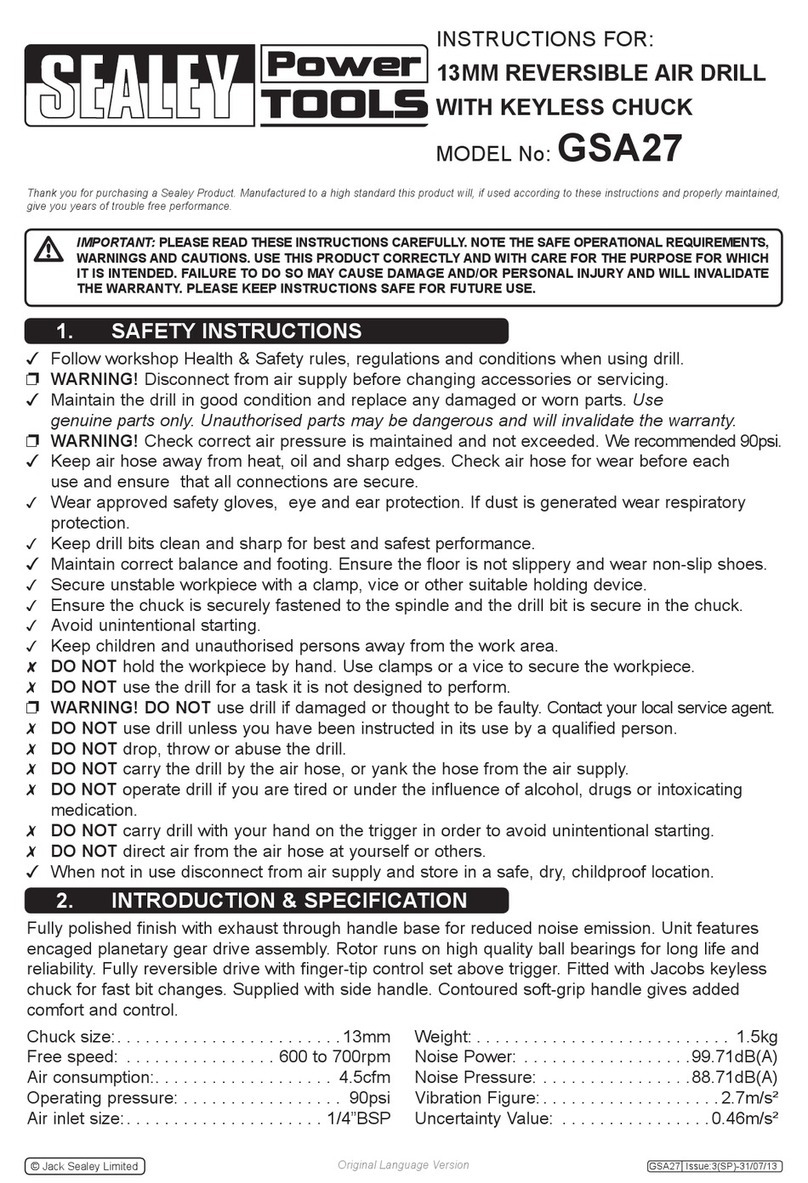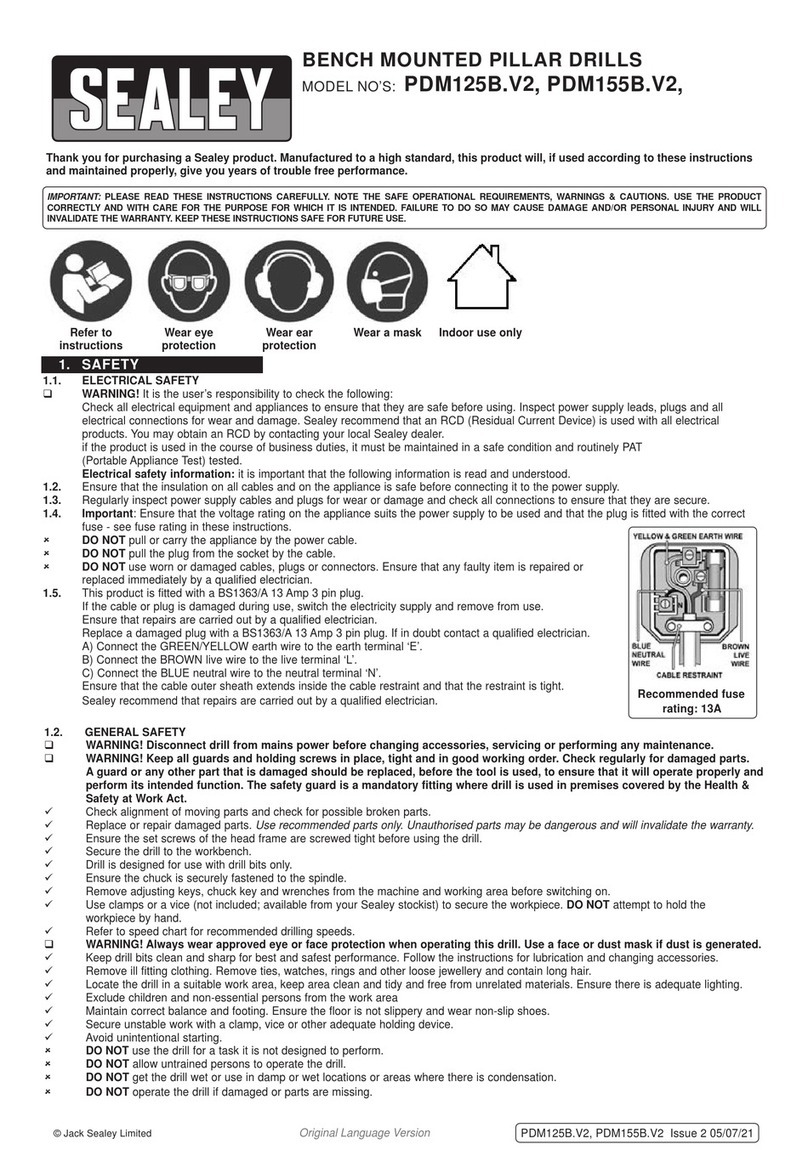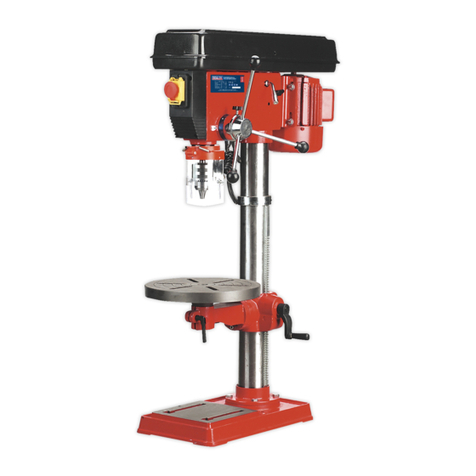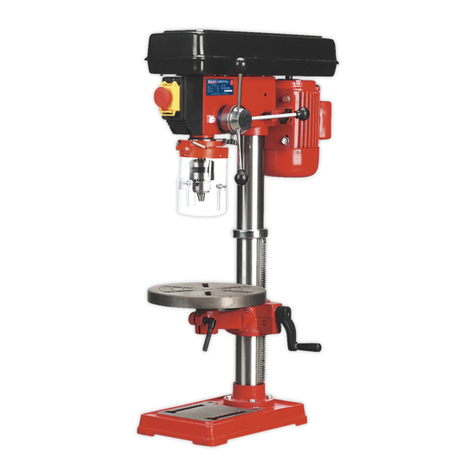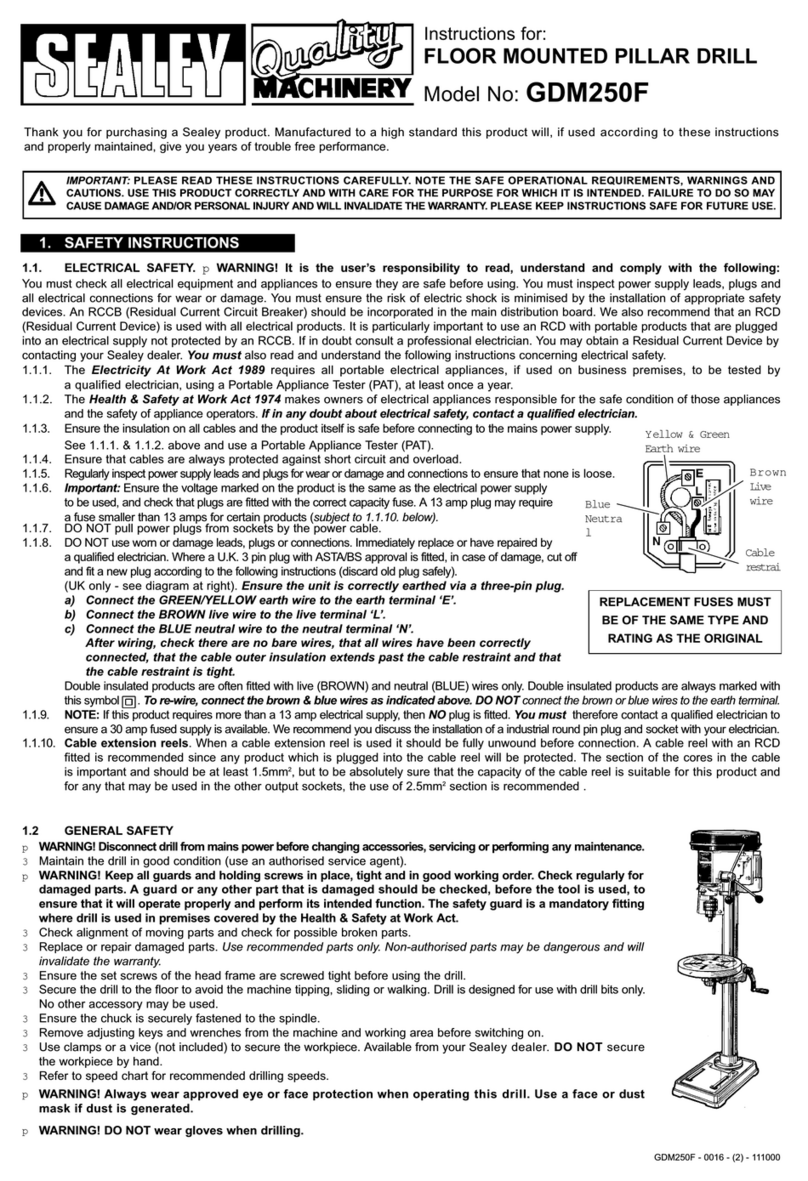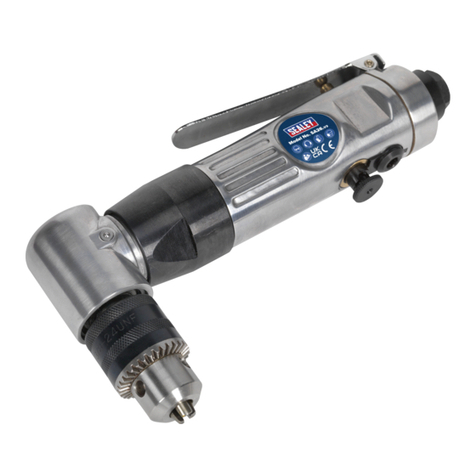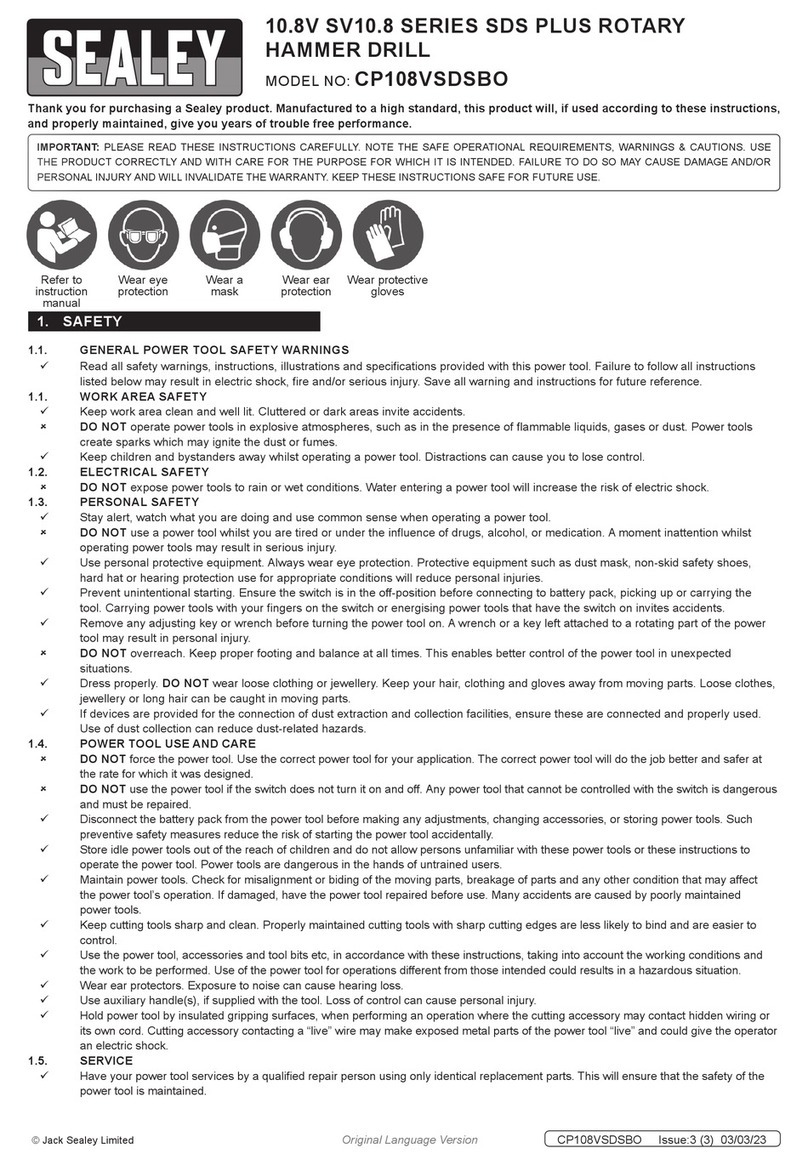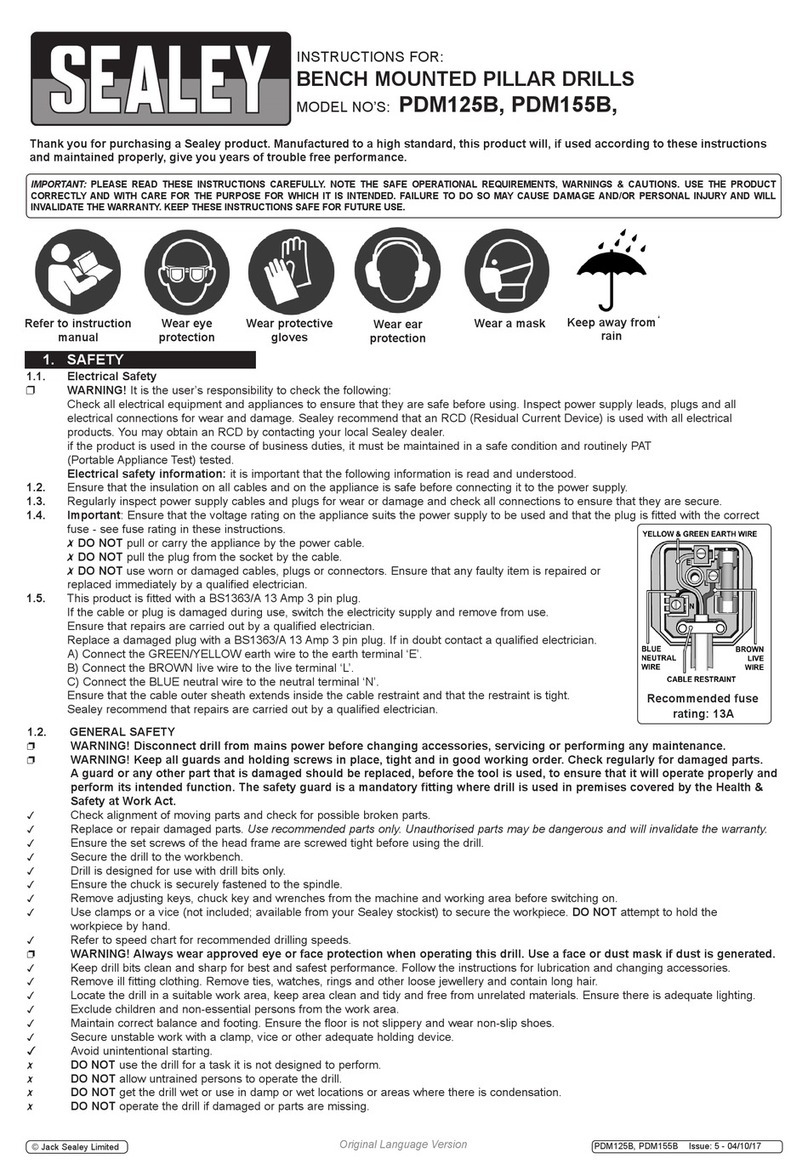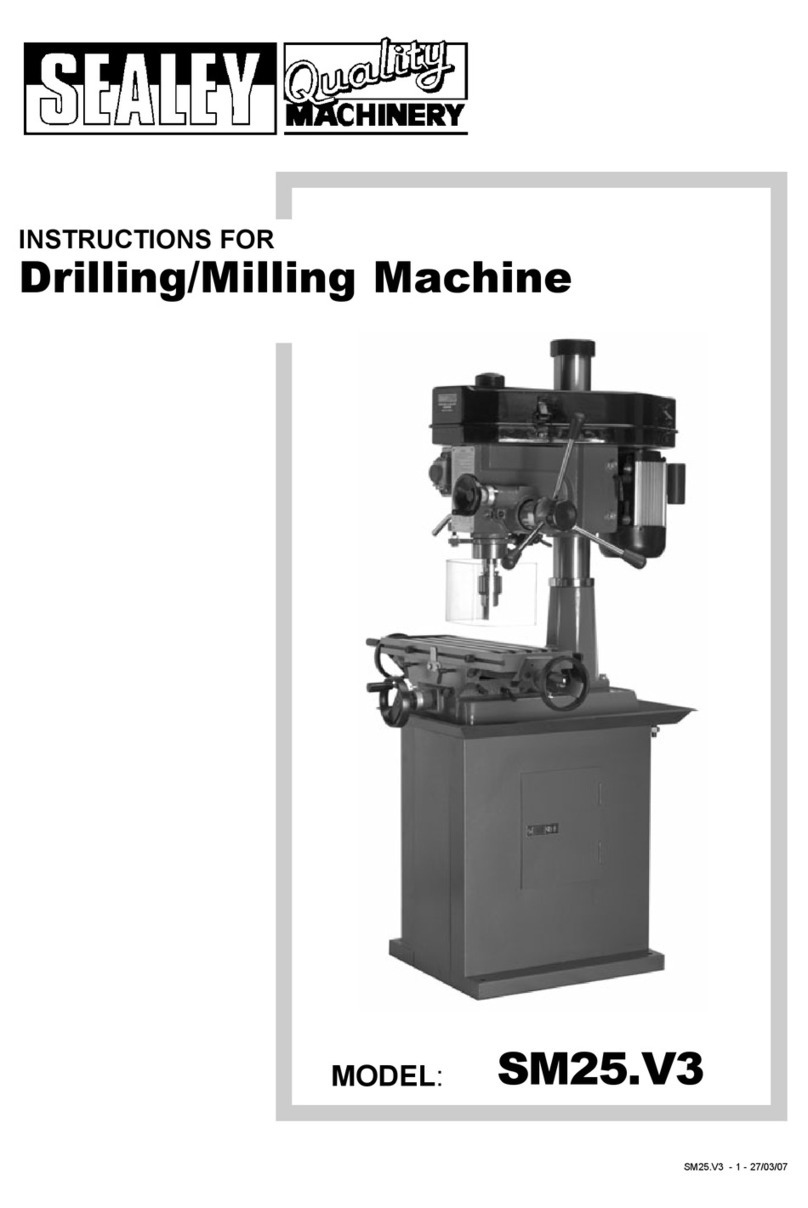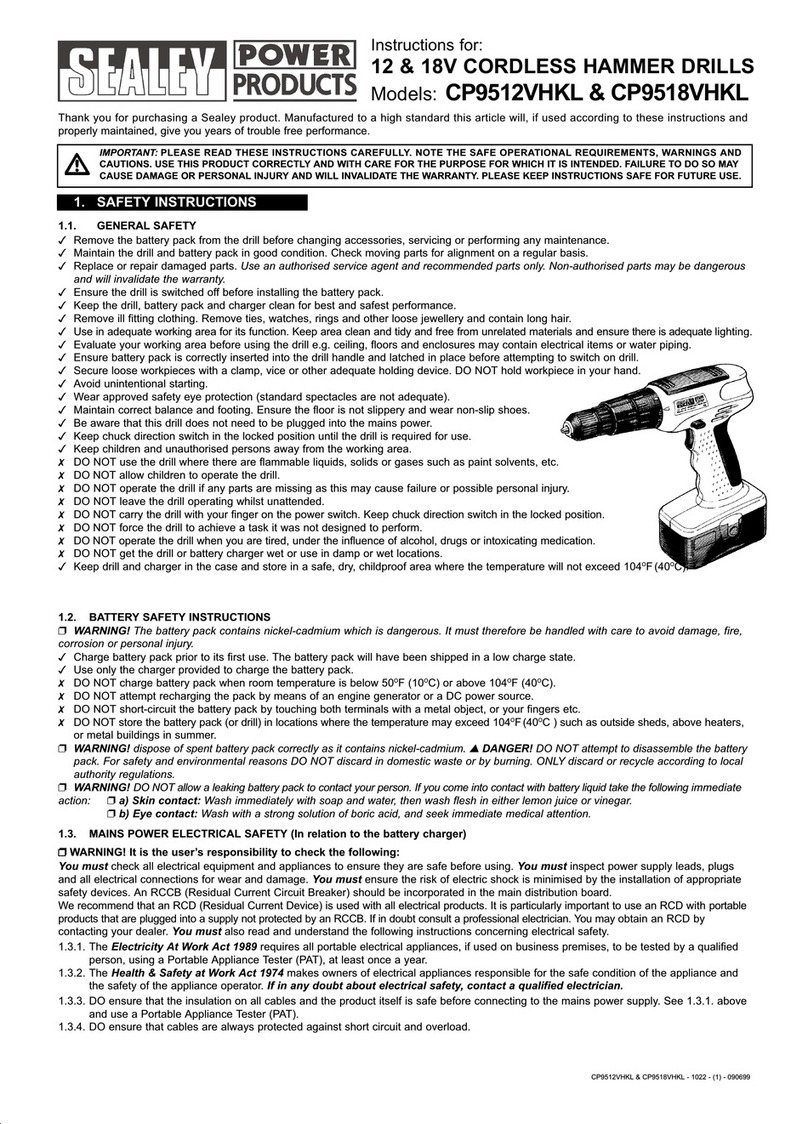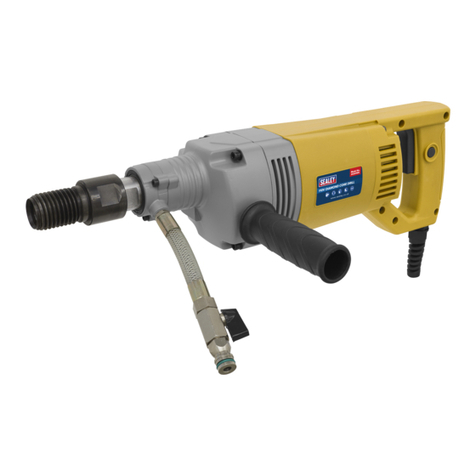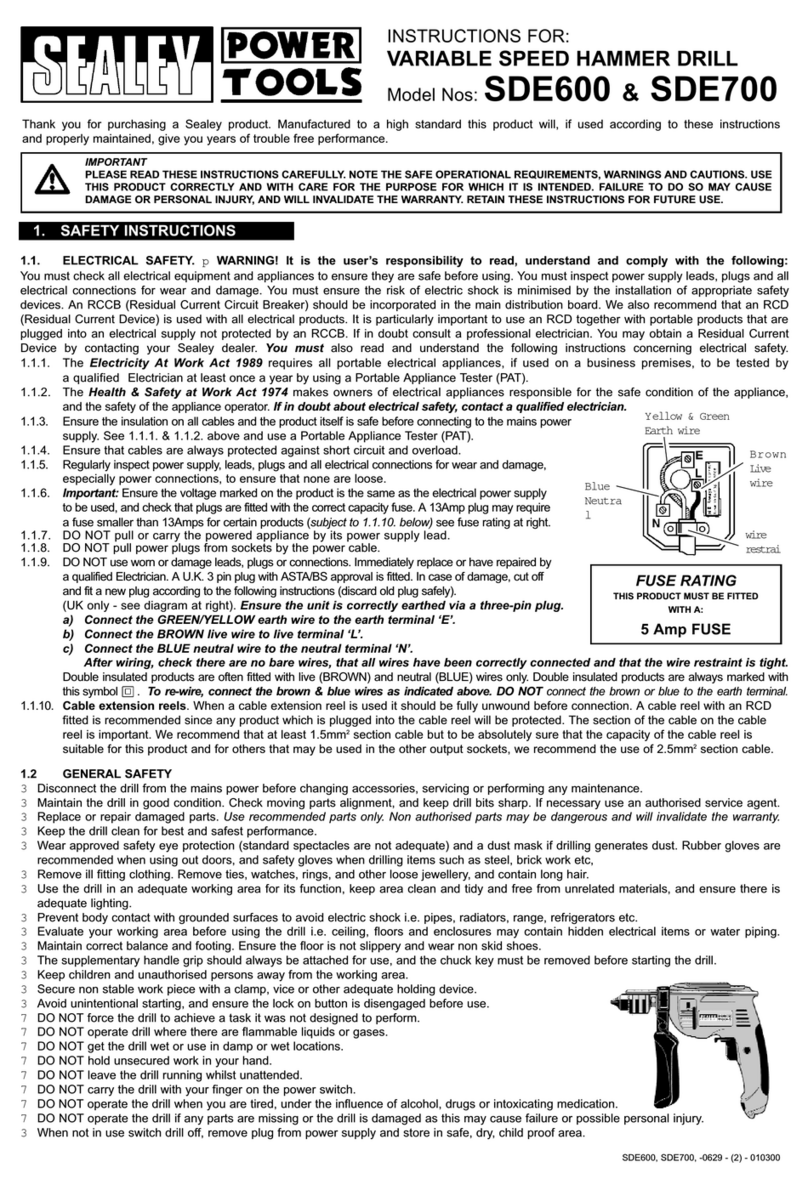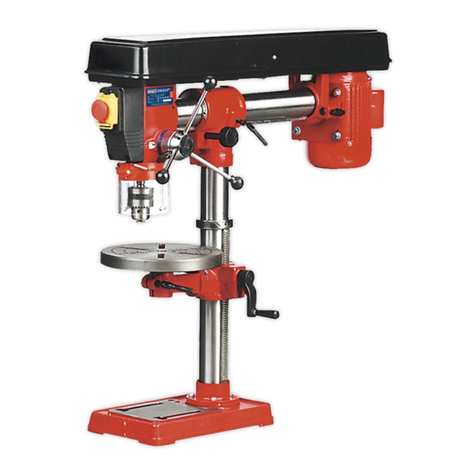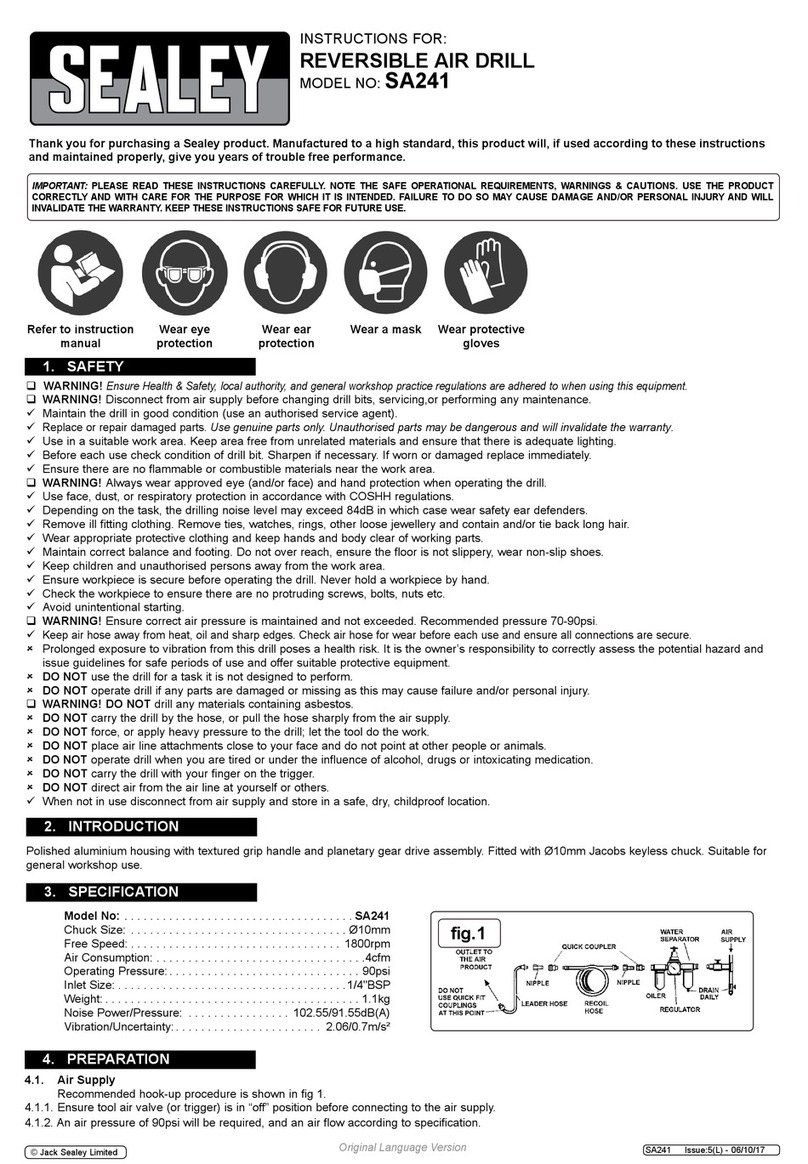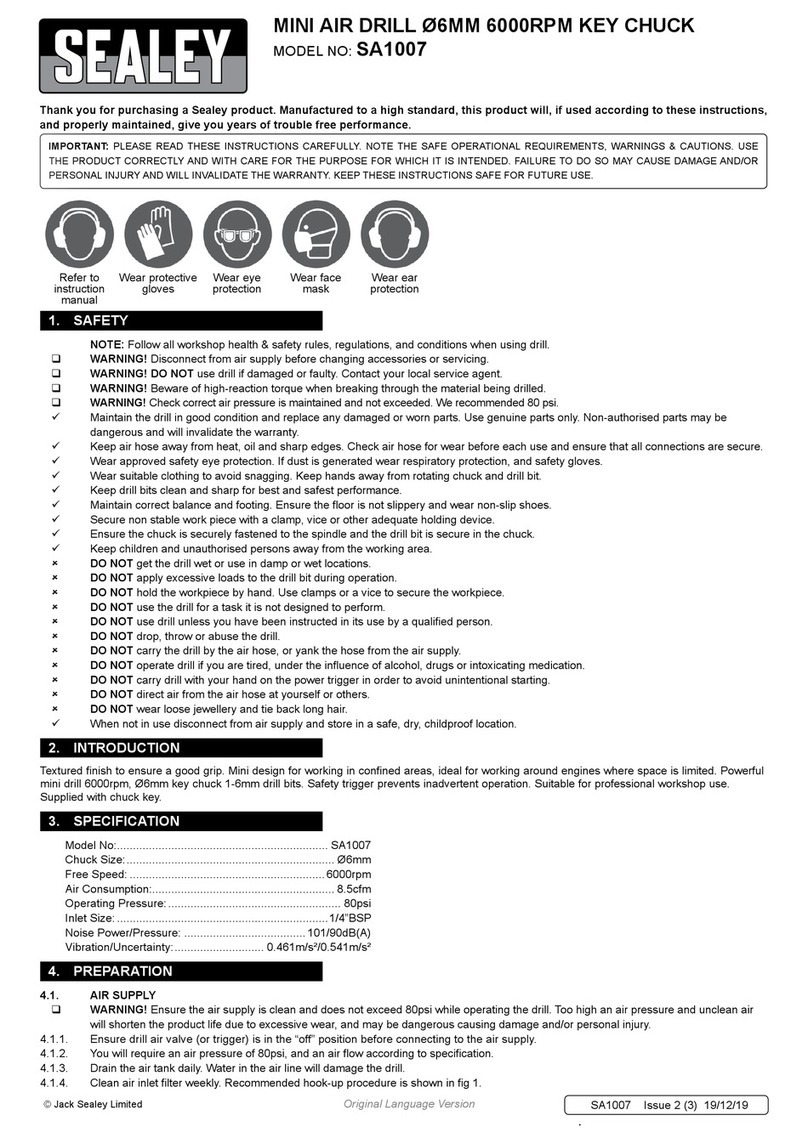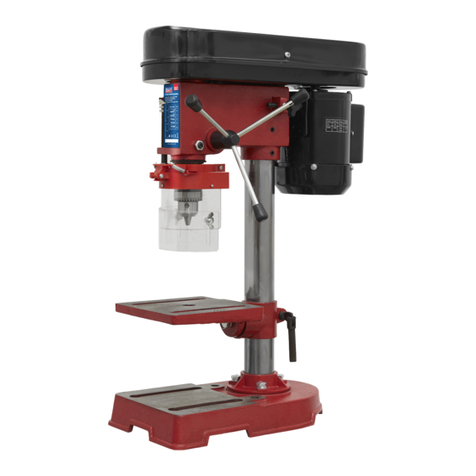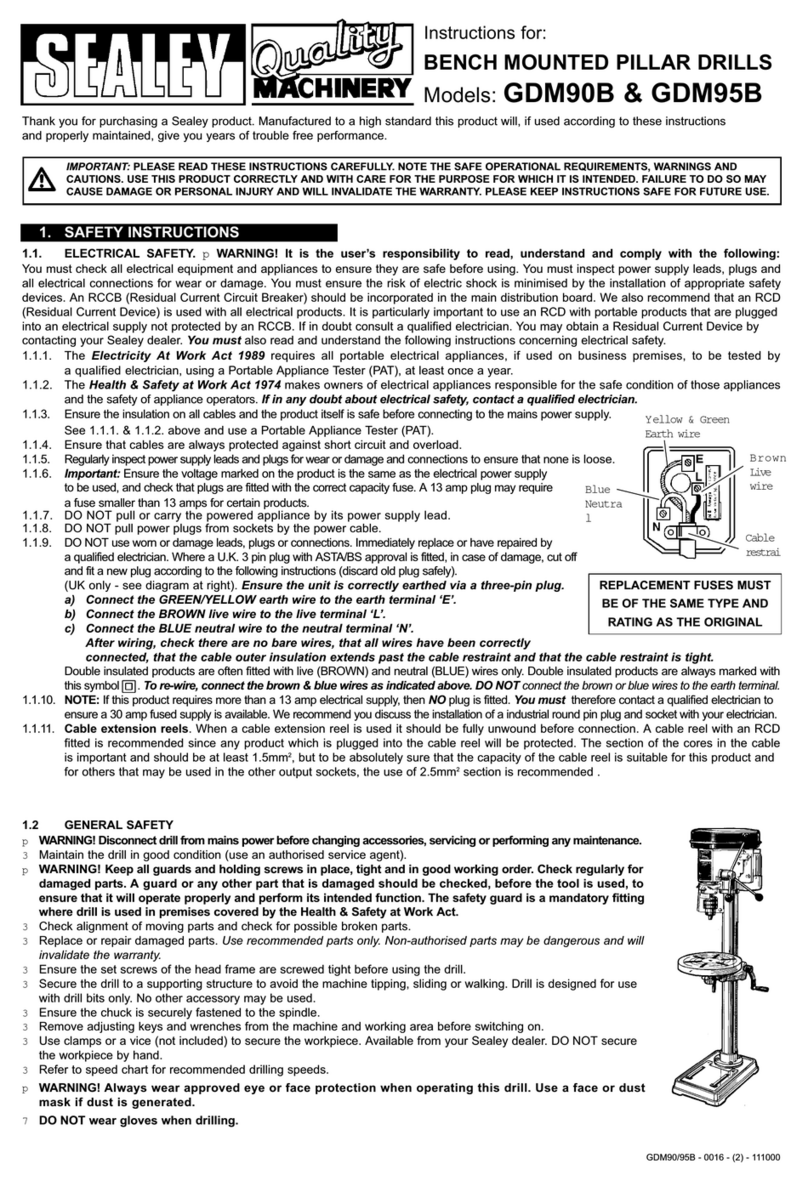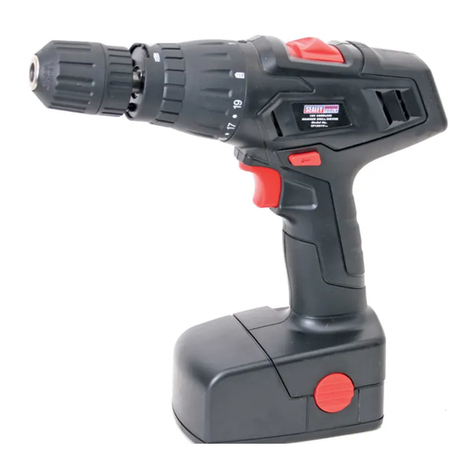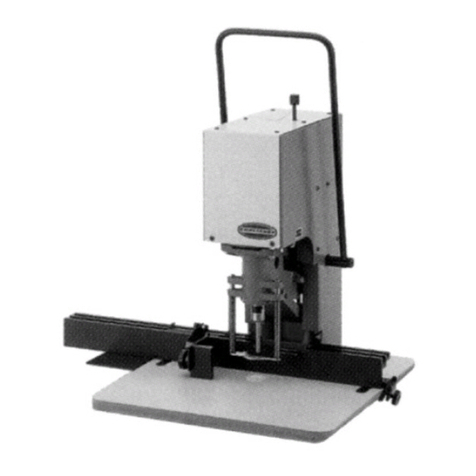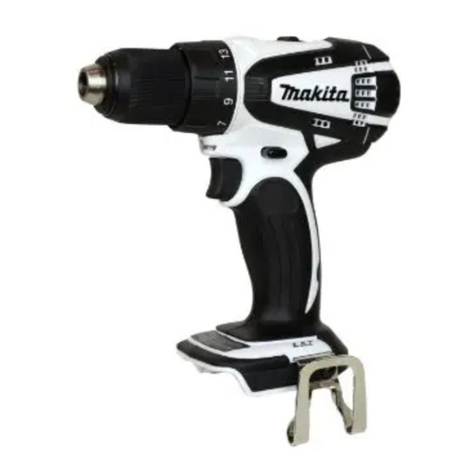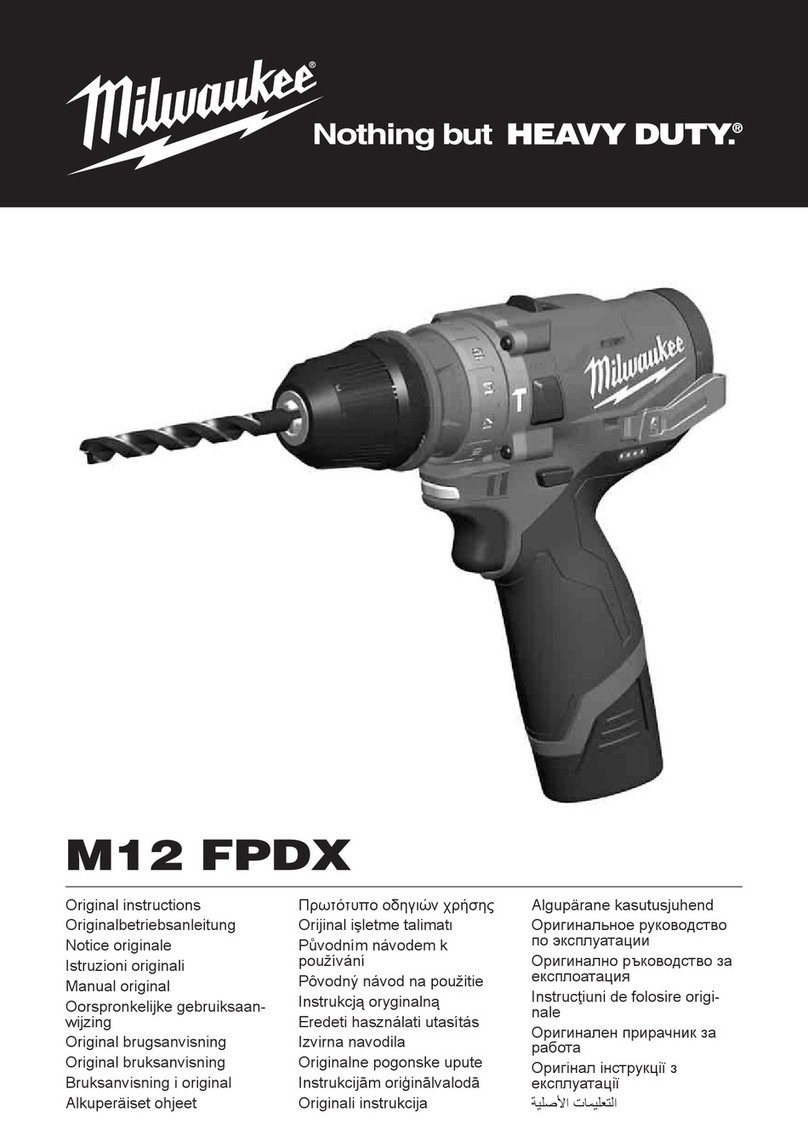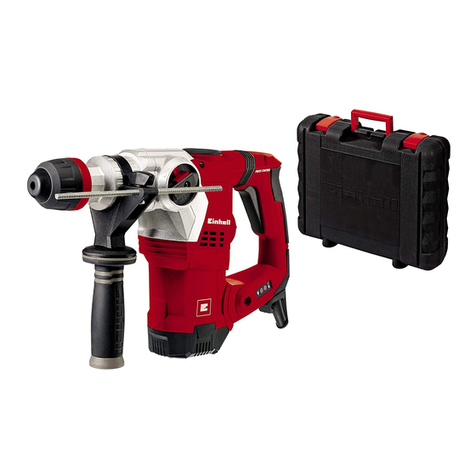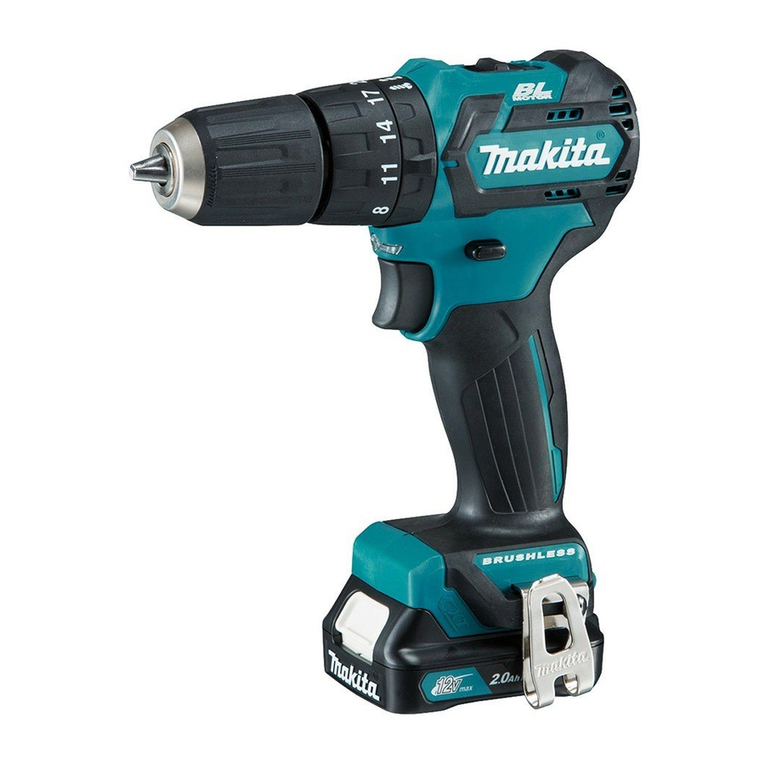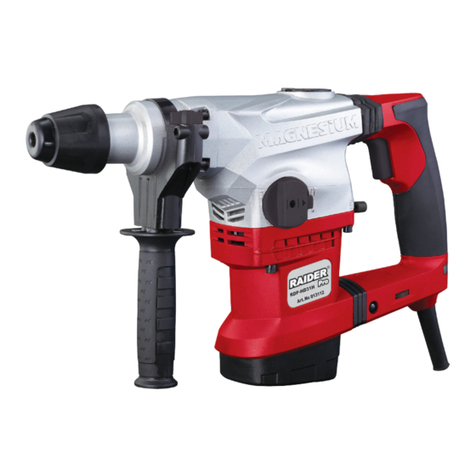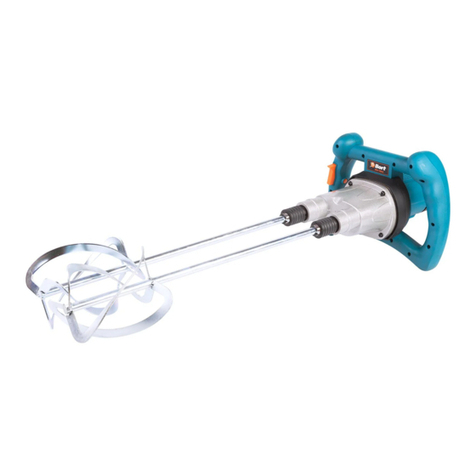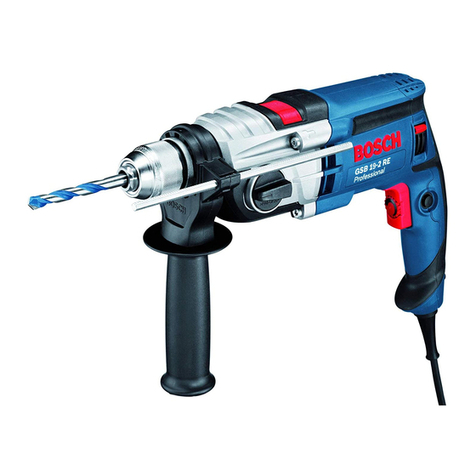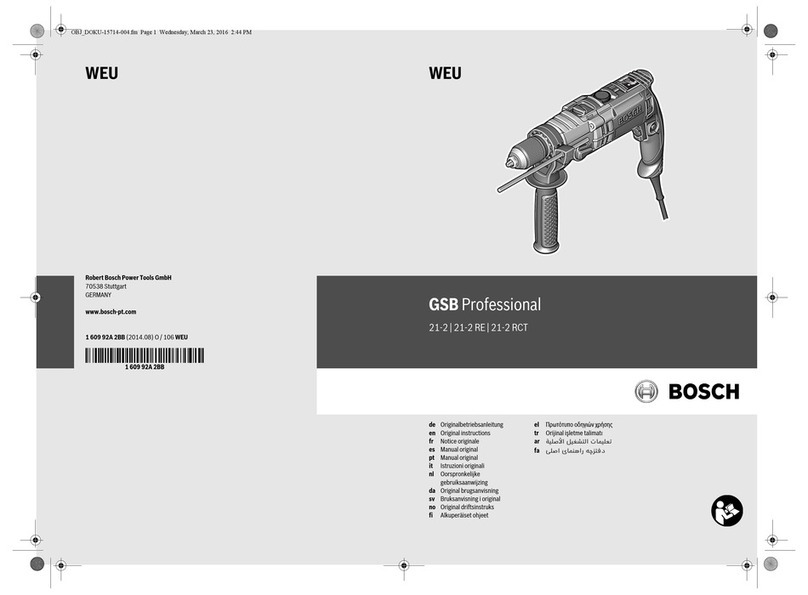
© Jack Sealey Limited Original Language Version
INSTRUCTIONS FOR:
CORDLESS LITHIUM-ION DRILL/DRIVER 14.4V 2Ah
10MM 2-SPEED 2 BATTERIES 40MIN CHARGER
MODEL NOs: CP6004, CP6014 (BODY ONLY)
IMPORTANT: PLEASE READ THESE INSTRUCTIONS CAREFULLY. NOTE THE SAFE OPERATIONAL REQUIREMENTS, WARNINGS & CAUTIONS. USE THE PRODUCT
CORRECTLY AND WITH CARE FOR THE PURPOSE FOR WHICH IT IS INTENDED. FAILURE TO DO SO MAY CAUSE DAMAGE AND/OR PERSONAL INJURY AND WILL
INVALIDATE THE WARRANTY. KEEP THESE INSTRUCTIONS SAFE FOR FUTURE USE.
Thank you for purchasing a Sealey product. Manufactured to a high standard, this product will, if used according to these instructions
and maintained properly, give you years of trouble free performance.
Refer to Instruction
Manual
Wear Eye
Protection
Wear Ear Protection Wear Protective
Gloves
Charger: Indoor
Use Only
1.1. ELECTRICAL SAFETY.
WARNING! It is the owner’s responsibility to read, understand and comply with the following electrical instructions:
You must ensure the risk of electric shock is minimised by the installation of appropriate safety devices. An RCCB (Residual Current
Circuit Breaker) should be incorporated in the main distribution board. We also recommend that an RCD (Residual Current Device)
is used with all electrical products, particularly portable equipment which is plugged into an electrical supply not protected by an RCCB.
You must also read and understand the following instructions concerning electrical safety.
1.1.1. The Electricity At Work Act 1989 requires all portable electrical appliances, if used on business premises, to be tested by a qualified
electrician, using a Portable Appliance Tester (PAT), at least once a year.
1.1.2. The Health & Safety at Work Act 1974 makes owners of electrical appliances responsible for the safe condition of the appliance and
the safety of the appliance operator.
If in any doubt about electrical safety, contact a qualified electrician.
Ensure that the charger and cable are inspected for wear and damage, to ensure they are safe before connecting to the mains power
supply. If worn or damaged DO NOT use, replace immediately or contact a qualified electrician.
DO NOT use worn or damage cables, plugs or connectors. Have any faulty item repaired or replaced
immediately by a qualified electrician. When an ASTA/BS approved UK 3 pin plug is
damaged, cut the cable just above the plug and dispose of the plug safely.
Ensure that the double insulated charger is correctly connected via a three-pin plug, as follows:
a) Connect the Brown live wire to live terminal ‘L’.
b) Connect the Blue neutral wire to the neutral terminal ‘N’.
c) After wiring, check that there are no bare wires, that all wires have been correctly connected,
that the cable outer insulation extends past the cable clamp and that the clamp is tight.
Note that the earth pin ‘E’ remains unconnected.
Check cables are always protected against short circuit and overload.
1.2. BATTERY SAFETY.
Charge battery prior to first use. The battery pack will have been shipped in a low charge state.
Use only the charger provided to charge the drill battery.
DO NOT charge battery when room temperature is below 50°F (10°C) or above 104°F (40°C).
DO NOT attempt recharging the battery by means of a generator or a DC power source.
DO NOT short-circuit the battery by linking both terminals with conductive materials.
DO NOT store the battery (or drill) in locations where the temperature may exceed 104°F (40°C).
DANGER! DO NOT attempt to dismantle the battery pack. For safety and environmental reasons DO NOT discard in domestic
waste or by burning. ONLY discard or recycle according to local authority regulations.
WARNING! DO NOT allow a leaking battery to contact your person. If you come into contact with battery liquid take the following
immediate action:
a) Skin contact: Wash immediately with soap and water, then wash flesh in either lemon juice or vinegar.
b) Eye contact: Wash with a strong solution of boric acid, and seek immediate medical attention.
1.3. BATTERY CHARGER SAFETY INSTRUCTIONS.
WARNING: DO NOT use the charger to charge any battery other than that supplied for the drill. Other types of batteries may
explode.
All mains electrical supply safety features must be followed as described in 1.3. above.
Disconnect the charger from the mains power supply when not in use.
Important: Check that the voltage marked on the charger is the same as the power supply to be used.
DO NOT pull or carry the charger by the power lead, or pull the plug from the mains socket by the power lead.
DO NOT use any other type of charger.
DO NOT try to open or dismantle the charger.
DO NOT get the charger wet, or use in wet, damp conditions (for indoor use only).
DO NOT operate the charger if it or the battery is damaged.
DO NOT insert foreign objects or material into the hole reserved for the battery.
DO NOT force the battery into the charger. The battery will only fit one way to ensure correct polarity alignment.
DO NOT charge a second battery immediately. Consecutive charging will overheat the charger. Allow the unit to cool for 15 minutes
before charging the next battery.
Store the charger in the same manner as the battery, see section 1.2.
1. SAFETY
Recommended Fuse
Rating: 3A
CP6004, CP6014 Issue: 1 - 11/11/15
